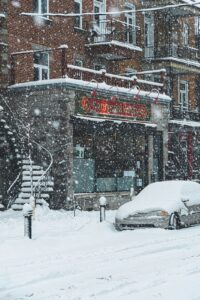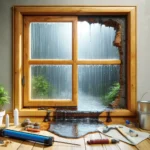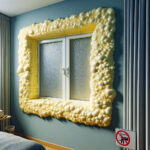The Quebec winter, with its extreme temperatures and biting winds, puts homes to the test. To maintain optimal comfort indoors, reduce your heating bills and prevent moisture problems, it is crucial to Fighting against air infiltration. Ce guide complet vous fournira les meilleures stratégies et astuces pour une isolation efficace et un hiver bien au chaud.
In Quebec, harsh winters make the fight against air infiltration even more crucial. The consequences of poor sealing can be multiple. First of all, they create thermal discomfort: cold drafts generate an unpleasant sensation, even with the heating on. Imagine sitting by a window in the middle of winter, feeling a trickle of cold air chill your neck, even though the thermostat indicates a comfortable temperature. This is the direct effect of air infiltration. Secondly, they lead to an increase in heating costs. To compensate for heat loss, the heating system has to work harder, significantly increasing energy costs. In addition, air infiltration can promote the appearance of moisture and mold problems. Condensation caused by air infiltration can lead to moisture problems on walls, windows and even in insulation, promoting the appearance of mold, which is harmful to the health and structure of the house. Finally, overconsumption of energy, directly linked to air infiltration, has an environmental impact. This overconsumption contributes to greenhouse gas emissions. It is important to distinguish between airtightness (which blocks air movement) and thermal insulation (which slows down heat transfer). The two are complementary for maximum effectiveness. Sealing keeps cold air out, while insulation keeps heat in.
 To make your home more airtight and reduce air infiltration, several actions can be taken.
To make your home more airtight and reduce air infiltration, several actions can be taken.
 Why is fighting air infiltration essential in Quebec?
Why is fighting air infiltration essential in Quebec?
In Quebec, harsh winters make the fight against air infiltration even more crucial. The consequences of poor sealing can be multiple. First of all, they create thermal discomfort: cold drafts generate an unpleasant sensation, even with the heating on. Imagine sitting by a window in the middle of winter, feeling a trickle of cold air chill your neck, even though the thermostat indicates a comfortable temperature. This is the direct effect of air infiltration. Secondly, they lead to an increase in heating costs. To compensate for heat loss, the heating system has to work harder, significantly increasing energy costs. In addition, air infiltration can promote the appearance of moisture and mold problems. Condensation caused by air infiltration can lead to moisture problems on walls, windows and even in insulation, promoting the appearance of mold, which is harmful to the health and structure of the house. Finally, overconsumption of energy, directly linked to air infiltration, has an environmental impact. This overconsumption contributes to greenhouse gas emissions. It is important to distinguish between airtightness (which blocks air movement) and thermal insulation (which slows down heat transfer). The two are complementary for maximum effectiveness. Sealing keeps cold air out, while insulation keeps heat in.
Identify the main sources of air infiltration
Several points in your home can be prone to infiltration. Doors and windows are the first sources, with worn seals, ill-fitting frames or simple glazing. Air can infiltrate through the gaps between the frame and the wall, or through the glazing itself if it is not efficient. Cracks and joints in walls, foundations, or around ducts can also be entry points. These cracks, even small ones, can let in significant amounts of cold air. Air can also infiltrate through openings in electrical outlets and switches on exterior walls, creating localized drafts. The chimney, if its damper is not properly closed, can become a real duct for cold air, acting as an inverted chimney. Access hatches to the attic or crawl space, if not well insulated, can also let cold air through, affecting the temperature of adjacent rooms. Finally, ventilation systems, if they are poorly balanced or if their ducts are not insulated, can promote air infiltration, instead of simply renewing the indoor air. Foundation insulation is also crucial because it helps to limit air infiltration and heat loss from the bottom of the house.Concrete solutions for a watertight house
 To make your home more airtight and reduce air infiltration, several actions can be taken.
To make your home more airtight and reduce air infiltration, several actions can be taken.



